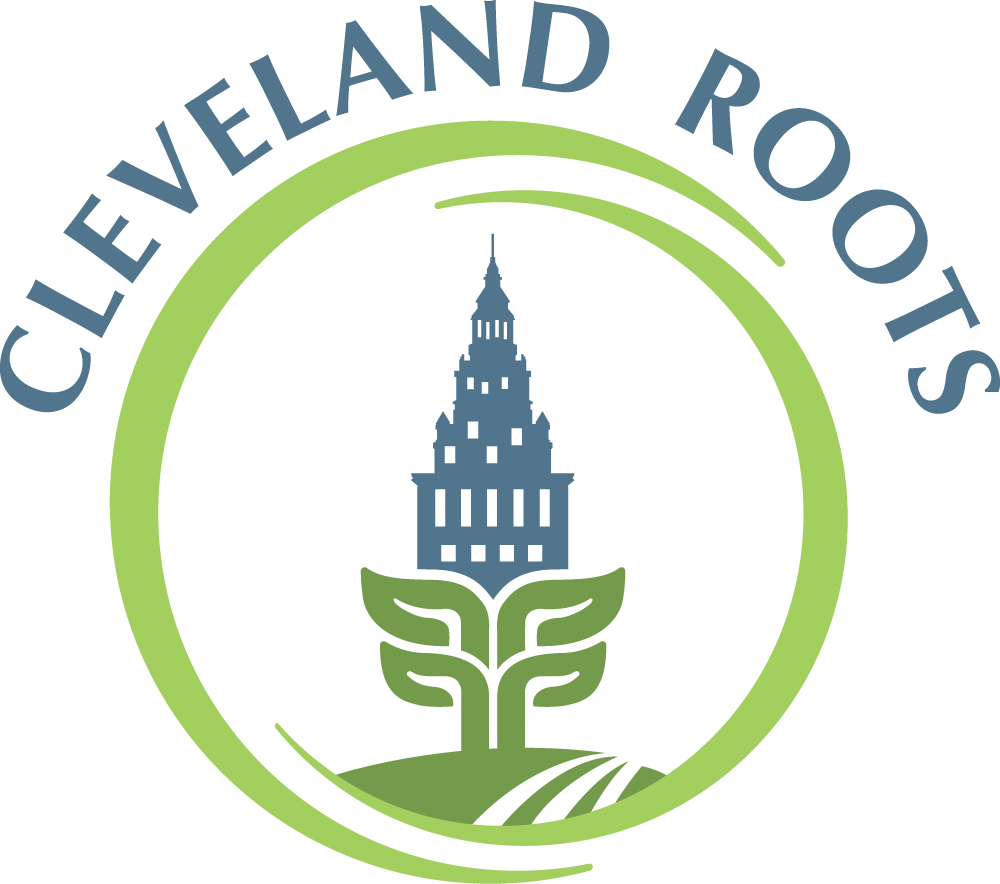carrying
the growing tradition forward

Cleveland Roots exists to…
Provide access to affordable, fresh produce for the Clark-Fulton neighborhood and Cleveland’s food deserts.
Offer educational opportunities around gardening, harvest, food preparation and preservation - and successful growing practices in Northeast Ohio.
Cultivate community.
Promote food as health — you are what you eat!
Preserve and restore farmland and historic spaces.
Grow healthy, fresh produce for our neighbors and community.
Heritage
Our Roots
Cleveland Roots was established by a group of individuals with a passion for people and plants, with collective experience in sustainable agriculture, education, and nonprofit administration. Recognizing the negative impact that food deserts have on communities, they joined together in an effort to encourage healthy living, strengthen community, and foster environmental stewardship.
Cleveland roots is planted…
on the near West side of Cleveland in the historic Berghaus Flowers facilities, which served the Clark-Fulton neighborhood for 126 years. The facility was owned by the Berghaus family for five generations and enables Cleveland Roots to carry the growing tradition forward, while changing the focus from aesthetics and beauty to function and health.
Rooted in preservation
Cleveland Roots’ founders rescued the last 17 acres of what was originally a 100-acre family farm slated for home development. CR purchased the property to preserve its historical legacy and grow nourishing, healthy produce for the Cleveland area.
The farm had been owned by the Sobecki family since 1909, when they bought a 100-acre parcel to grow potatoes and other field crops (wheat, hay, and more) using horse-drawn equipment. They also raised beef steer, sheep and chickens. For decades, the Sobeckis shared the property with Richfield’s original (mid-1800s) one-room schoolhouse, which they used as an outbuilding. Unfortunately, due to its dilapidated condition, the building was razed several years ago.
Although the farm has belonged to the Sobecki family for four generations, pieces have been sold off over the past 50 years. Cleveland Roots purchased the last 17-acre parcel in 2015. Our goals for the farm are to preserve the land, renovate the remaining buildings, and grow fruits and vegetables — specifically to provide fresh produce for Cleveland’s food deserts. We are delighted that owner Bill Sobecki and his wife, Beth, continue to live in the farmhouse on the property and oversee the restoration of Bill’s childhood homestead.
These restoration efforts have included relaying and rebuilding the barn foundation (using original sandstone on a new cement footer), replacing all of the foundation sill plates and other failing beams, relaying original hand-cut sandstone in the barn’s lower level, updating the septic system, dredging out and restoring the old pond to its original ¾-acre size, and restoring the existing chicken coop.
Homestead restoration efforts include:
Rebuilding the barn foundation (using original sandstone on a new cement footer)
Replacing the foundation sill plates and other failing beams
Relaying original hand-cut sandstone in the barn’s lower level
Updating the septic system
Dredging out and restoring the old pond to its original ¾-acre size
Rehabbing the existing chicken coop
Our Partners
Our relationships are key to our success.
Thank you to the support and partnership of our fellows!
Interested in collaborating?
We’re just a group of individuals
with a passion for people and plants.
Doug Fawcett | Founder

Community Served
New Relationships
Cleveland Roots participants don’t just learn and grow food, they learn about each other and grow connections. Over the past eight years, hundreds of people who started off as strangers now know each other’s names as a result of their work together. These neighbors of different ages and backgrounds practiced the ability to respectfully adapt interactions with individuals from all over the world who have diverse customs.







